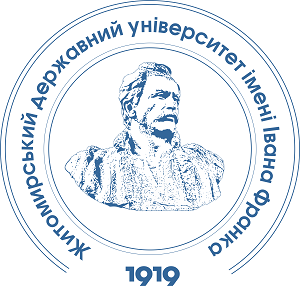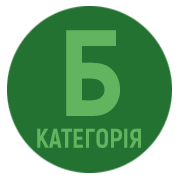THE INFLUENCE OF MINERAL FERTILIZERS ON THE PRODUCTIVITY OF ELECAMPANE (INULA HELENIUM L.) IN THE POLISSYA REGION OF UKRAINE
DOI:
https://doi.org/10.32782/naturaljournal.12.2025.17Keywords:
elecampane, Inula helenium L., mineral fertilizers, productivity, yield, planting density, cultivation techniquesAbstract
In modern conditions of growing demand for medicinal plants, the development of effective cultivation technologies for valuable species, particularly elecampane (Inula helenium L.), becomes especially important. This perennial plant of the Asteraceae family contains valuable biologically active compounds (inulin, essential oils, alantolactone), which determine its wide application in pharmaceutical, cosmetic, and veterinary fields.The study aimed to investigate the effect of different mineral fertilizer rates (N30P30K30 and N60P60K60) on elecampane productivity in the Polissya region of Ukraine. Field experiments were conducted at the agrobiological station of Zhytomyr Ivan Franko State University from 2015 to 2022. The research included evaluation of plant morphometric parameters, biomass accumulation dynamics, and yields of roots, green mass, and seeds.The results demonstrated that mineral fertilizer application significantly improved plant growth and development indicators. At the end of the first vegetation year, plant height in the control (without fertilizers) was 23.0 cm, while with N30P30K30 application it increased to 25.0 cm, and with N60P60K60 – to 26.0 cm. Leaf area expanded from 16.4 cm² in control to 24.3 cm² with double fertilizer dose. Root mass per plant increased from 16.4 to 19.1 g depending on fertilization treatment.The N30P30K30 dose proved to be most effective, providing reliable increases in air-dried root yield by 3.37 t/ha (55.2% compared to control), green mass by 70.1 t/ha (29.4%), and seeds by 1.42 t/ha (86.1%). The double fertilizer dose (N60P60K60) didn’t always show proportional efficiency growth, indicating the advisability of using moderate fertilization rates.Special attention was paid to studying optimal plant density. It was established that maximum productivity was achieved with density of 110 thousand plants/ha and row spacing of 45 cm. Such plantations formed air-dried root yield at 23.5 t/ha, exceeding by 5.4 t/ha the indicators at density of 60 thousand plants/ha.The research results have important practical significance for developing resource-saving elecampane cultivation technologies. They prove the effectiveness of using mineral fertilizers at N30P30K30 rate, which allows obtaining significant yield increases at optimal costs. The obtained data can be used to improve cultivation techniques for this valuable medicinal plant in Polissya and similar climatic regions.
References
Біленко В.Г. Технологія вирощування лікарських рослин і використання їх у медичній та ветеринарній практиці : навчальний посібник. Київ : Арістей, 2007. 656 с.
Вожегова Р.А., Лиховид П.В., Біляєва І.М. Сучасний стан, перспективи та напрями розвитку виробництва лікарських рослин в Україні. Таврійський науковий вісник. Серія: Сільськогосподарські науки. Херсонський державний аграрно-економічний університет. Херсон : Видавничий дім «Гельветика», 2021. № 118. С. 57–67. https://doi.org/10.32851/2226–0099.2021.118.7.
Дудченко Л Г., Козяков А.С., Кривенко В.В. Пряно-ароматичні та пряно-смакові речовини : підручник. Київ : Наукова думка, 1989. 304 с.
Єщенко В.О., Копитко П.Г., Костогриз П.В., Опришко В.П. Основи наукових досліджень в агрономії. Вінниця, 2014. 332 с.
Жарінов В.І., Остапенко А.І. Вирощування лікарських, ефіроолійних, пряносмакових рослин. Київ : Вища шк., 1994. 231 с.
Климчук О.В. Лікарські рослини. Технологія вирощування : навчальний посібник. Вінниця, 2012. 187 c.
Котуков Г.К. Культивовані і дикорослі лікарські рослини : довідник. Київ : Наук. думка, 1974.
Лихочвор В.В., Борисюк В.С., Дубковецький С.В., Онищук Д.М. Лікарські рослини. Значення, біологічні та ботанічні особливості, технологія вирощування, заготівля. Львів : Укр. Технології, 2003. 272 с.
Мірзоєва Т.В. Аналіз сучасного стану виробництва лікарських рослин в Україні. Приазовський економічний вісник. 2018. № 6 (11). С. 62–67. [Електронний ресурс] URL: http://pev.kpu.zp.ua/journals/2018/6_11_uk/14.pdf (дата звернення 10.04.2025).
Рахметов Д.Б., Стадничук Н.О., Корабльова О.А. та ін. Нові кормові, пряносмакові та овочеві інтродуценти в Лісостепу і Поліссі України. Київ : Фітосоціоцентр, 2004. 162 с.
Рябчун В.К., Кузьмишина Н.В., Богуславський Р.Л., Безугла О.М., Музафарова В.М., Бондаренко В.М., Докукіна К.І. Інтродукція рослин як пріоритетний напрям наукової і практичної діяльності Національного центру генетичних ресурсів рослин України. Генетичні ресурси рослин. 2019. № 24. С. 11–26. https://doi.org/10.36814/pgr.2019.24.01.
Шевченко Т., Глущенко Л. Інтродукція лікарських рослин цукрознижуючої дії та природних цукрозамінників. Вісник Львівського університету. Серія біологічна. 2016. № 73. С. 449–449.
Islamov A.Kh., Zaripova R.Sh., Murodova T.M., Gaibullaeva O.O. Propagation of Inula hele- nium L. Plant and determination of elements content and biological characteristics. Research Jet Journal of Analysis and Inventions. 2024. Vol. 5 (4). P. 15–23.
Jevđović D.R., Filipović M.V., Radanović O.D., Maletić M.R. Variranje prinosa korena omana u odnosu na genotipu. Naučno – stručno savjetovanje agronoma Republike Srpske sa međunarodnim učešćem ‘Proizvodnja hrane u uslovima otvorenog tržišta’. Teslić. Republika Srpska. 2004. 15–18 mart. 61 р.
Kovačević N. Fiziološki aktivni sastojci biljaka familije Asteraceae. Arhiv za farmaciju. 1995. Vol. 45 (5). Р. 183–198.
Stepanović B., Radanović D., Kisgeci J. Kultivacija lekovitog i aromatičnog bilja u Srbiji. XXV Savetovanja o lekovitim i aromatičnim biljkama. Bajina Bašta. 2002. 9–14 jun. Р. 62–63. [Електронний ресурс] URL: http://journalagroeco.org.ua/article/view/248267 (дата звернення: 20.04.2025).






